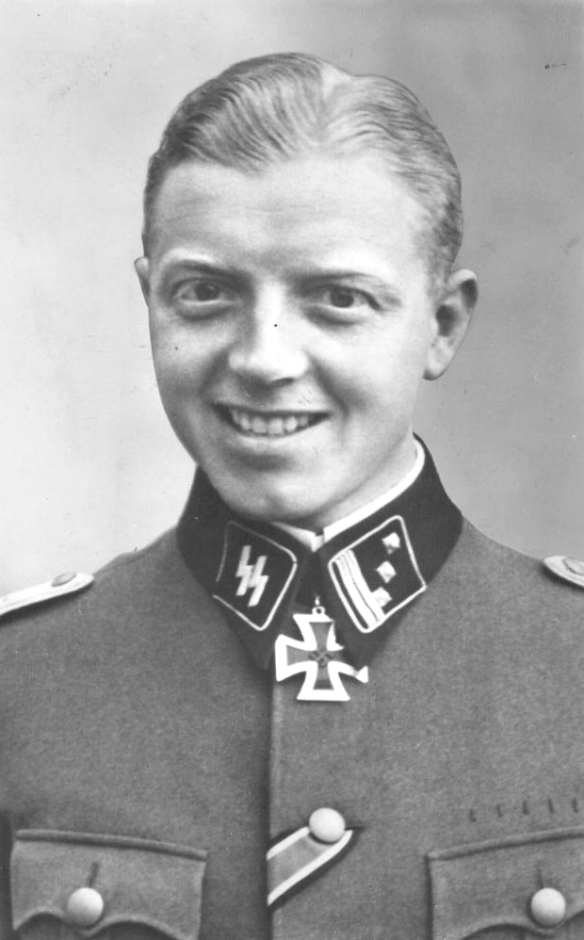
Fritz Klingenberg at the time of his audacious thrust on Belgrade.
The Waffen-SS order of battle at the beginning of the Balkan campaign which preceded the invasion of Russia in April 1941 thus stood at: the Leibstandarte Adolf Hitler, SS Division Reich-, SS Totenkopf Division; SS Polizei Division; SS Division Wiking-, SS Kampfgruppe Nord-, and SS Standarte Nr 9 (a Totenkopf unit). Each regiment had a reserve battalion in Germany which was intended to supply trained troops as casualty replacements. In addition, the five remaining Totenkopfstandarten were drawn together in a training area around Debica, in Poland, where two of them were turned into cavalry regiments (to form the nucleus of the later SS Kavallerie Division Florian Geyer), the remainder forming two unnamed motorised brigades. Three new police regiments, at this time separate from the Waffen-SS, were also raised by Himmler, principally for behind the lines and anti-partisan duties.
On December 18 1940 Hitler issued his first directive for Operation Barbarossa—the invasion of Russia—but this was to be forestalled, with devastating consequences, by the failure of Hitler’s ally, Mussolini, in the Balkans. The Italians had, without German sanction, invaded Greece in October 1940, and rapidly proved themselves inadequate to the task, even before the Empire Expeditionary Force landed to assist the Greeks in March 1941.
Under heavy political pressure, Bulgaria and then Yugoslavia were forced to declare themselves on the German side, although the latter was only a temporary state of affairs because the Yugoslav government was overthrown and a new, anti-German, regime repudiated the alliance. Hitler, in one of the hysterical rages for which he became infamous, declared the postponement of the Russian campaign in order to crush these dissidents.
Leibstandarte and Reich moved from their rest areas in France and Austria into Rumania in preparation for the invasion of Yugoslavia, Reich under the command of Reinhardt’s XLI Panzer Korps, Leibstandarte in List’s XII Army. Reich distinguished itself immediately following the invasion of Yugoslavia on April 6, Paul Hausser describing their operations in the following words:
‘The operation against Belgrade, the capital city, started with the main troop concentration south of the rivers Drau and Danube. Only Reinhardt’s Panzer Korps was employed north of the rivers for mopping up in the Banat and Batschka provinces. It seemed hopeless to try and reach Belgrade from north of the Danube. Nevertheless, an assault party under Hauptsturmführer Fritz Klingenberg of the motor cycle battalion got hold of a motor boat and, after a hazardous journey, managed to enter Belgrade and force the mayor to hand over the city.’
The Leibstandarte, meanwhile, had been involved in very stiff fighting in the mountains guarding the Yugoslav-Greek border, taking two days to force the Klidi Pass against stubborn Australian and New Zealand resistance, and then the Klissura Pass against the Greeks. During part of the latter assault Kurt ‘Panzer’ Meyer, who was then in command of the reconnaissance battalion, had to throw a hand grenade at the heels of his own troops to force them into the open against heavy machine-gun fire. This questionable action nevertheless resulted in over a thousand prisoners for the loss of only six Leibstandarte troopers killed and nine wounded. Meyer himself said later that ‘never again did I witness such a concerted leap forward as at that second!’ A day later his unorthodox methods were further rewarded by the capture of another 11,000 prisoners, for which he received the Knight’s Cross. Next, the Leibstandarte captured another mountain pass, the Metzovon, cutting off 16 Greek divisions and forcing them to surrender. Greece capitulated three days later and the British Empire Expeditionary Force had to retreat, narrowly avoiding being cut off by a daring Fallschirmjäger assault on the Corinth Canal.